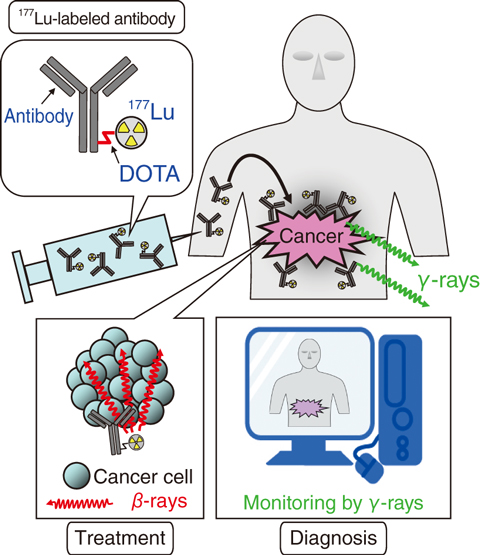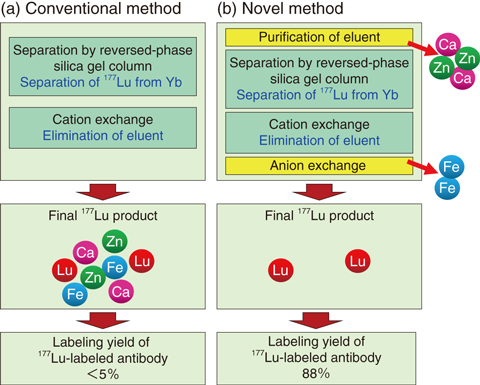
Fig.5-29 Treatment and diagnosis of cancer by a 177Lu-labeled antibody

Fig.5-30 Separation of 177Lu from neutron-irradiated Yb
At present, beta-emitting radionuclides are used for cancer treatment. Lutetium-177 (177Lu) is regarded as a promising novel radionuclide because it emits not only β-rays but also γ-rays. By measurement of the γ-rays from outside of the body, diagnostic imaging to investigate the biodistribution within the body can be performed (Fig.5-29).
Fig.5-29 shows a schematic diagram of radioimmunotherapy. 177Lu is transported to a cancer cell by the antibody, which binds to an antigen that is specifically expressed on the cancer cell. By this therapy, if the purity of 177Lu for the whole Lu isotope is low, the amount of 177Lu transported to the cancer cell is reduced. Consequently, the therapeutic effect of 177Lu upon the cancer cell is reduced. Two methods have been proposed to produce high purity 177Lu. One is the direct method via the 176Lu (n, γ) 177Lu reaction. In this method, stable lutetium (176Lu) is irradiated at reactors in Europe and America with large amounts of neutron-generation over a limited area. The other is the indirect method via the 176Yb (n, γ) 177Yb (half-life: 1.91 h) → 177Lu reaction. In this method, stable ytterbium (176Yb) is irradiated at reactors throughout the world with a low quantity of neutrons, and 177Lu is separated from Yb. Therefore, to produce high-purity 177Lu with the indirect method, various separation methods of 177Lu from Yb have been investigated in many countries.
We have developed a method for completely separating 177Lu from Yb using a reversed-phase silica gel column (Fig.5-30(a)) and have synthesized 177Lu-labeled antibodies using the 177Lu produced by our separation method. However, the labeling yield was < 5%. From the results of elemental analysis, it was found that calcium (Ca), iron (Fe), and zinc (Zn) were included in the final 177Lu product, and that these metallic elements competitively inhibited the complexation between 177Lu and 1,4,7,10-tetraazacyclododecane-1,4,7,10 -tetraacetic acid. Consequently, the labeling yield of 177Lu-labeled antibody decreased. It was also found that these metallic elements were included as impurities in the regents of both 2-hydroxyisobutyric acid (2-HIBA) and 1-octanesulfonic-acid sodium salt (1-OS), eluents of the reversed-phase silica-gel column. Therefore, the eluents of 2-HIBA and 1-OS were purified by cation-exchange and chelating-ion-exchange columns in advance, respectively. Furthermore, an anion exchange was added as a final purification step (Fig.5-30(b)). The concentrations of Ca, Fe, and Zn in the final 177Lu product were reduced from 87, 340, and 77 ppb to 13, 18, and 9 ppb, respectively, and the labeling yield of the 177Lu-labeled antibody increased up to 88%. Consequently, we successfully produced highly purified 177Lu capable of being applied to radioimmunotherapy.
If the highly purified 177Lu can be produced using our method all over the world, radioimmunotherapy with 177Lu will spread widely.